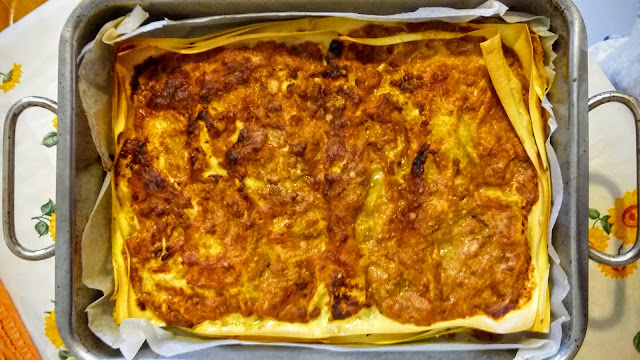SOTTO IL SEGNO DELLA VERGINE
UNDER THE SIGN OF VIRGO
Secondo il
calendario astronomico, nel suo apparente percorso annuale, il Sole entra nel segno della Vergine il 16 settembre e vi resta fino al 30 ottobre.
According to the astronomical calendar, in his apparent yearly path, the Sun enters the sign of Virgo on September 16th and stays there until October 30th.
Due sono le stelle, secondo me, più interessanti di questa costellazione: SPICA (Alfa Virginis) e VINDEMIATRIX (Epsilon Virginis).
SPICA è la più luminosa ed in realtà è una "stella binaria a eclisse", cioè una coppia di stelle che orbitano una intorno all'altra eclissandosi reciprocamente, così che Spica appare variabile nella sua luminosità.
VINDEMIATRIX invece è la terza classificata per luminosità nella costellazione ed è una "stella gigante gialla"
In my opinion, the most interesting stars in this constellation are these two ones: SPICA (Alpha Virginis) and VINDEMIATRIX (Epsilon Virginis).
SPICA is the brightest one and, actually, it is an "eclipsing binary star," that is a pair of stars that orbit each around the other and eclipse each other, so that Spica appears variable in its brightness.
VINDEMIATRIX is the third-placed for brightness in the constellation and is a "giant yellow star"
Chi è la VERGINE che risplende di stelle nella volta celeste?
Non si pensi ad una contraddizione, ma si tratta della DEA MADRE, la più antica di tutte le divinità, colei che, nei tempi primordiali del matriarcato, impersonava i ciclici mutamenti della Natura, all'interno dei quali si nascondeva il mistero della Vita, come il susseguirsi delle stagioni sulla Terra o le fasi della Luna.
Who is the VIRGO who is shining in the sky?
Do not think it is a contradiction, but she is the MOTHER GODDESS, the oldest of all the gods, the one who, during the primordial times of matriarchy, embodied the cyclical changes of Nature, within which the mystery of Life was hidden, such as the sequence of the seasons on Earth or the phases of Moon
Come la NATURA, anche la DEA MADRE è ciclicamente mutevole:
prima fiorente fanciulla (vergine) come la Terra che fiorisce a primavera o come la Luna Crescente, poi pienamente donna (ninfa) come la Luna Piena e feconda come la Terra fruttifera nei mesi estivi e del primo autunno, infine declinante (vegliarda) ma destinata a rigenerarsi, come la Luna Calante che, dopo essersi oscurata, torna a crescere o come la Terra invernale che, sterile in superficie, custodisce la vita nei semi che germinano nel sottosuolo, per sbocciare a primavera.
Like NATURE, also the MOTHER GODDESS is cyclically changing.
Before, She is a flourishing girl (virgin) like the Earth blooming in spring or like the Crescent Moon. Then, She is full woman (nymph) like the Full Moon, She is fecund like the fruiting Earth in summer and early autumn. Finally, She is declining (old woman) but destined to regenerate, like the Waning Moon that, after darkened, grows again or like the wintry Earth that, barren on the surface, keeps life in the seeds germinating under the ground, to bloom in spring.
La triplice manifestazione (vergine, ninfa, vegliarda) dell'unica Dea Madre, portò poi, nei tempi storici in cui si scrissero i miti, alla sua divisione nelle varie dee olimpiche come ad esempio Artemide, Core-Persefone (la dea vergine), Afrodite, Hera (la dea ninfa), Ecate infernale (la dea vegliarda).
Fra tutte ce n'è una sola che esprime il significato più antico e suggestivo della Dea Madre ed è DEMETRA, la MADRE TERRA, tra le più antiche divinità olimpiche, la dea delle messi e dell'agricoltura, alla quale il Mito fa risalire il ciclico alternarsi delle stagioni.
In historical times, when the myths were written, the triple manifestation (virgin, nymph, old woman) of the one Mother Goddess, led to her division in the different Olympic goddesses such as Artemis, Core-Persephone (virgin goddess), Aphrodite, Hera (nymph goddess), infernal Hecate (old woman goddess).
Among these goddesses only one expresses the oldest and most beautiful meaning of the Mother Goddess. She is DEMETER, the MOTHER EARTH, one of the oldest Olympian gods, the goddess of the harvest and agriculture, to whom the Myth attributes the cyclical changing of the seasons.
E allora è DEMETRA colei che risplende nella COSTELLAZIONE della VERGINE, dove la stella Spica è la spiga di grano che, come la dea vergine, nasce e cresce nel corso della primavera e matura poi pienamente d'estate, quando DEMETRA, la MADRE TERRA, dona le messi di grano, seguite da molti altri frutti, come ad esempio l'uva.
Perciò nella costellazione c'è Vindemiatrix, la stella della vendemmia, che incomincia a fine agosto, proprio quando il Sole entra nel segno della Vergine secondo il
calendario astrologico che, quando venne istituito circa 2000 anni fa, dava le date esatte delle costellazioni zodiacali.
So Demeter is the one who shines in the Virgo constellation, where the star Spica is the ear of wheat that, like the virgin goddess, is born and grows in spring and becomes fully mature in summer, when DEMETER, the MOTHER EARTH, gives the crops of wheat, followed by many other fruits, such as grapes.
So, in the constellation, there is Vindemiatrix, the star of the harvest, which begins in late August, just as the Sun enters the sign of the Virgo according to the astrological calendar that, when it was established about 2000 years ago, gave the exact dates of the zodiac constellations.
 |
ANTICO BASSORILIEVO IN PIETRA DELLA DEA MADRE
ANCIENT BAS-RELIEF STONE OF MOTHER GODDESS. |
 |
DEMETRA, particolare da un piatto
di terracotta che ho dipinto a mano
DEMETRA, detail from a terracotta
plate I hand painted |
MITOliberty for lovers of antiquity per chi ama l'antichità















































